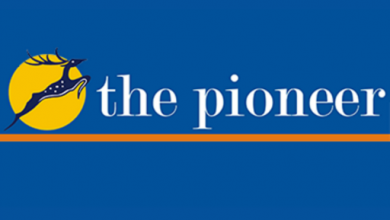Literacy- The cornerstone of education
GUEST COLUMN

September 8 was declared as International Literacy Day by UNESCO on October 26, 1966. Though it was a subdued affair this year due to Covid-19, it does not diminish the importance of literacy.
Literacy rate is defined as the percentage of people in a given age group who can read and write, understand short and simple statements. Those who can read and write are more powerful than those who cannot, in many aspects of life. Studies worldwide have shown that literacy leads to increased horizon for the human brain and body expression. A Tamil poet Thiruvalluvar said that “letter and number are the two eyes of humans”. Acquiring literacy and basic education is the tool for growth of any individual and the nation. Literacy is crucial to acquiring and learning essential life skills that enables people to address challenges in life. Education can be a prime factor in achieving the UN sustainable development goals (SDG).
Considering the importance of education, many countries are increasing budgetary allocation for education. The developed nations are spending around 5 to 7% of GDP on the education sector, while the poor countries are investing and allocating the least amount to the education sector. The development of any country can be analysed considering the percentage of budget for the education sector. Though types of natural resources may vary from country to country, education is a resource which can be consistently built and improved. Hence, all governments should give importance to this man-made and acquired resource which is the supreme wealth even written in Indian scriptures.
UNESCO has been mandated to lead the global movement and coordinate the international efforts to provide a framework for ensuring that education reaches out to all. Governments, development agencies, civil society, non-government organisations and the media are some of the partners working towards reaching these goals. UNESCO’s coordination with other international organisations allows access to education and growth in diverse communities, allows freedom of expression and enables learning from advancements in technology. The world literacy foundation is working to reach children in remote communities.
According to Valluvar, by birth all men are equal; it is by the differences in their actions that their birth is rendered unequal. Formal and informal education plays an important role in their life. Thoughts are the primary source of all actions which are influenced by the status of literacy and education of an individual. Education is one of the important pillars of the growth of an individual and ultimately of the family, society and the nation.
According to UNESCO figures, India’s current literacy rate is 72%- with 80.9% among men and 62.8% among women. If our country wants to progress then our government will have to make a resolve to ensure education for all because education is the prime mover. Overpopulation is the root cause of all ills. Illiteracy and poverty are interrelated. Illiteracy leads to poverty, unemployment and various social and health related problems. The efforts to reduce illiteracy are not at the same pace as the pace of the increasing population. Another significant cause of illiteracy is the perception that education is expensive; hence, poor parents are not sending their kids to school. Illiterate parents do not know the value of literacy and education. As such there is no favourable environment for education in poor families.
Considering the importance of literacy and education India should increase the budgetary allocation for the education sector considerably. The author believes that health, education and nutrition are the foundation pillars of growth of an individual and nation. Though national literacy mission comprised four schemes and teacher training programme was also launched in India, it has not given the results as anticipated by government of India. It is suggested, that if even a fraction of the amount spent on adult literacy, is spent properly on primary education then things could be very different. The quality of teachers is also a very strong factor in determining the dropout rate especially in rural and remote areas. Patience and compassion are two important virtues of all teachers. Eventually many kids start hating teachers who lack these qualities and stop going to school. The dropout rate is more than 53% from class I to VIII. To increase the literacy rate and reduce the dropout rates, the medium of instruction or learning will play a crucial role. The medium of instruction or learning should be preferably in mother tongue because the children will learn and comprehend better in their mother tongue. Literacy is the cornerstone of any education. Had we not known or understood an akshar (letter) or an ank (number), how could we have achieved all that we have today?
(The writer is a Dehradun based orthopaedic surgeon)
Wednesday, 09 September 2020 | Dr. B K S Sanjay | Dehradun





